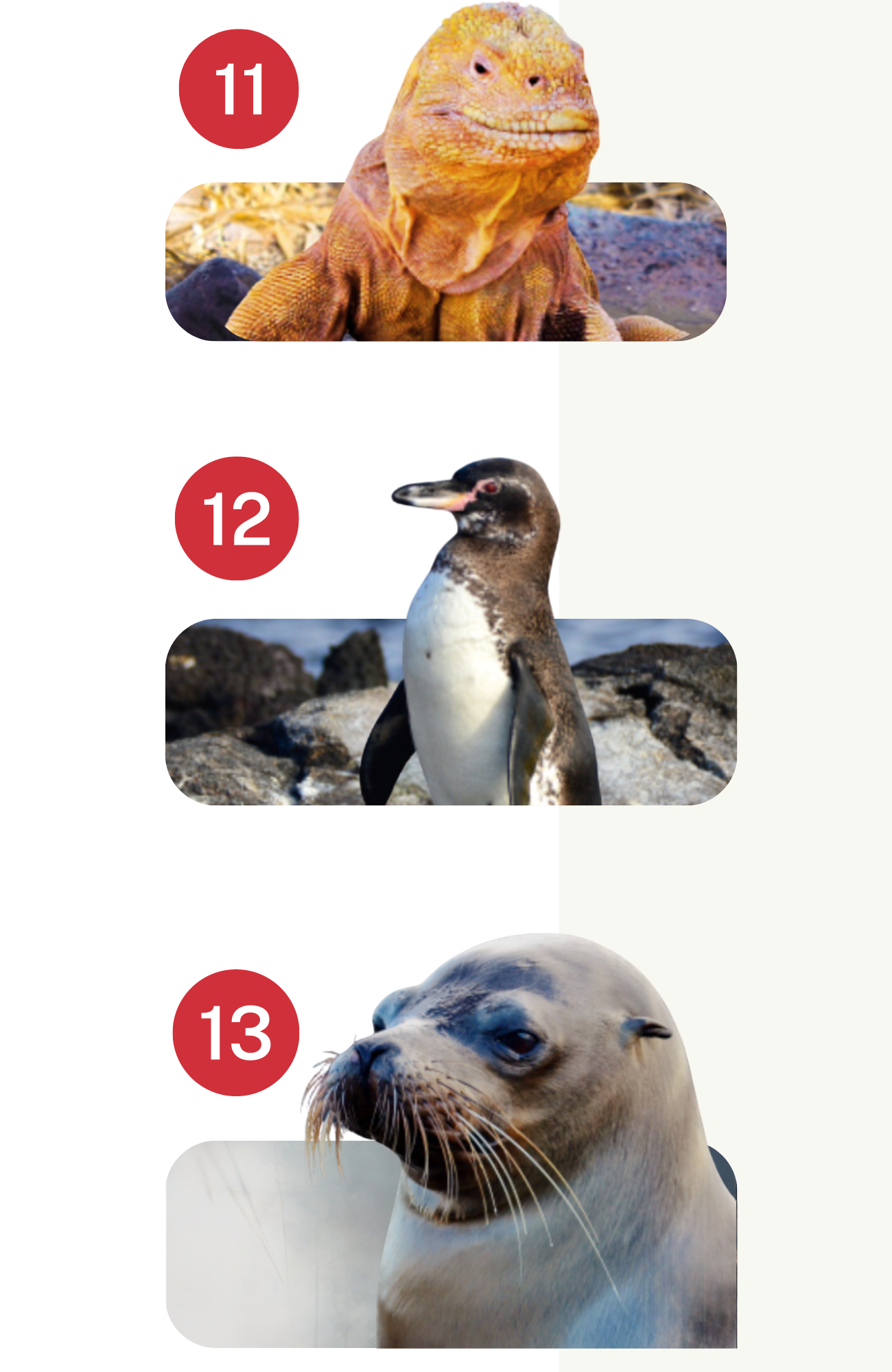TRAVEL AND ADVENTURE – Exploring TRAVEL & ADVENTURE – Ecuador´s Natural Treasure: the Galápagos Islands
-
Expats Magazine Group

- June 30, 2023
Cuenca Expats Magazine, Issue 42
Photos: Courtesy of Metropolitan Touring and Cuenca Expats Magazine
Ed. Note: This is the second in a four-part series exploring the Galapagos Islands. Go to Issue 42 to read Part 1.
Your first decision—visit or explore?
Galapagos is large—53,000 square miles. On the unique landscape of archipelagos, the size of Florida, there are 20 islands, 42 islets, and over 250 named rocks, plus species you cannot find anywhere else in the world. These animals have little fear of humans, so to view them in their own natural habitat is a life-changing experience. So, how many of the “Big 15” are you hoping to see? (You will be hearing a lot about the Big 15. They are the most iconic species you see on the islands.)
You may also want to consider the following questions before you go: Do I just want to snorkel or scuba dive and see the 400 species of fish and other under-water wonders? Am I active? Do I wish to hike the islands? How much time will I have on the islands? The more you learn about the islands the better you’ll enjoy your trip—matching your itinerary to your interests.
The last thing you want to have happen is to travel all the way there only to end your journey with a bunch of “I-wish-I-had-seen-or- done” regrets. The best time to visit the islands is any time. The chart below shows land and water temperatures and wind factors. We thought it would be fun to visit the islands in the same month of the anniversary of Darwin’s arrival some 187 years ago.
If you wish to explore (not just visit) the islands, how much time should you allow? Based on our experience, five or six days minimum.
Our journey was for six days, and we were only able to explore about one third of the islands we wanted to see. We chose to fly the one and a half hours to the islands on LATAM from Guayaquil.



Depending on the day, they have two to three flights to Baltra (the island airport in which we were headed) and one or two flights to the smaller airport on San Cristobal. The flight was full, so remember to book early. Like other educated people, we are concerned with the well-being of the earth and appreciate the delicate balance of the eco-systems on the islands. We wanted to make sure we left nothing behind other than our footprints. This was one of the reasons we chose Metropolitan Touring—a carbon neutral company. Metropolitan Touring will celebrate its 70th year in operation soon, and it was the pioneer along with the park service in creating modern tourism of the islands some 60 years ago.
We wanted to see the most islands and the most (Big 15) wildlife we could within the six days we had. Since the islands’ area is 94% water, it seemed logical for us to choose to stay aboard a ship for the majority of our trip. Surprisingly, less than 40% of the visitors to the islands do so. The rest stay at land-based hotels, with many taking day trips to visit nearby islands. However, the best day trips are usually booked up early and difficult to get, and smaller day-boats can only go out 25 miles or so, which can limit your travels. And, there can be safety concerns regarding some of the island ferries. Make sure yours is not booked over capacity and there are life-vests for everyone: not locked somewhere inaccessible in case of an emergency.









Before you decide on an itinerary, we would highly recommend you read “Choose Wisely Travel Smart”—helpful hints for any traveler to the Islands. Click the picture bellow. Interestingly, all vessels must be Ecuadorian owned to visit the islands, and you must have a certified guide with you at all times on island wildlife tours.
LATAM flies from Quito with connections in Guayaquil to the Islands. And, we recommend you book everything through Metropolitan. In this way, you can coordinate all your connections in case of a travel delay. When you check in (we joined the flight in GYE), it’s almost like traveling to another country. Airport authorities want to make sure you are not carrying any prohibited items to the islands, such as plastic bottles, food, etc. You have to first check in with a government office to receive a form called a Transit Control Card to travel to the islands. It’s $20 per person. When you get in line, make sure you have your return ticket to show them, and keep the Transit Form they give you handy, as you’ll need to present it to officials when you land on the islands. So off we went on LATAM’s punctual departure to start our adventure.









